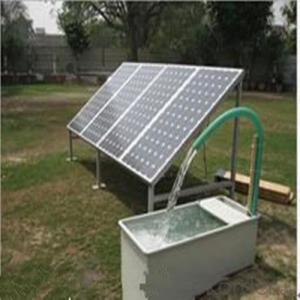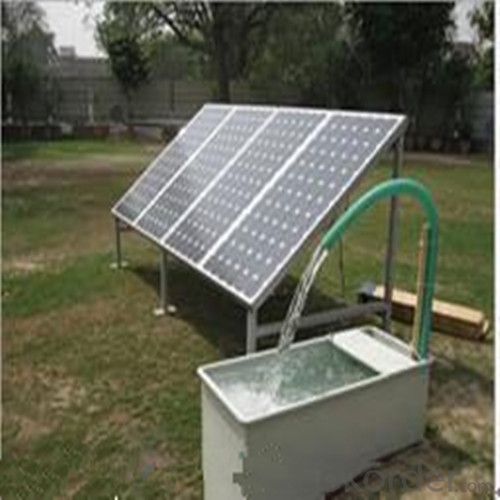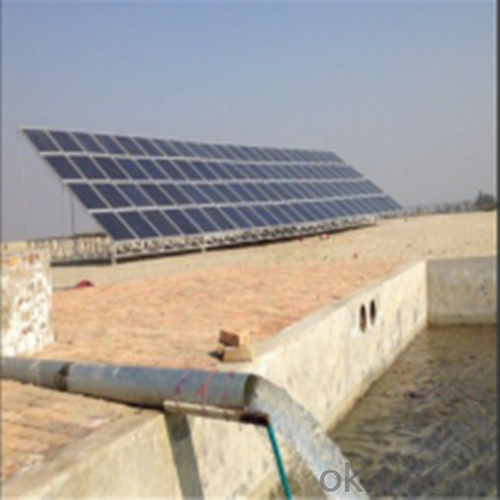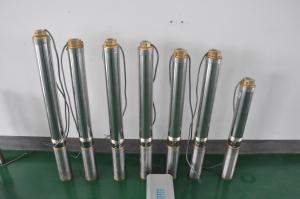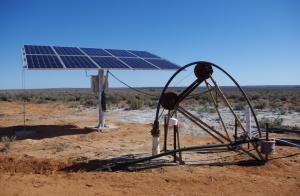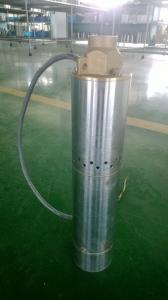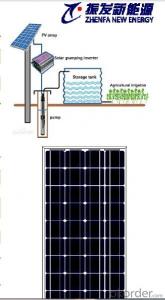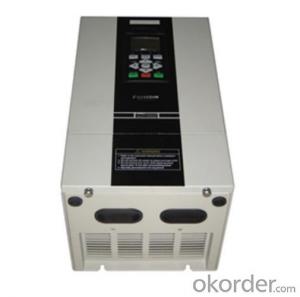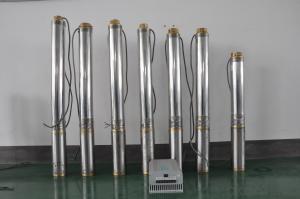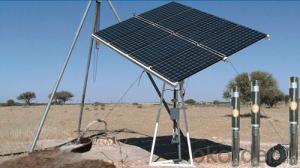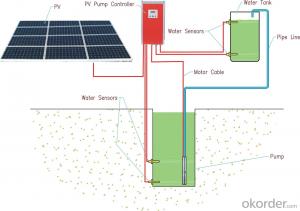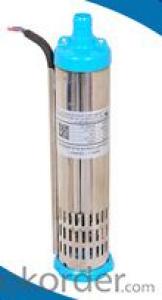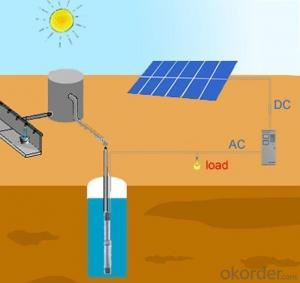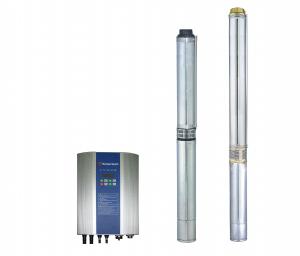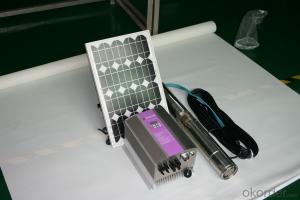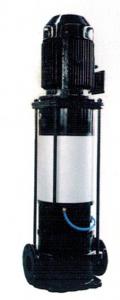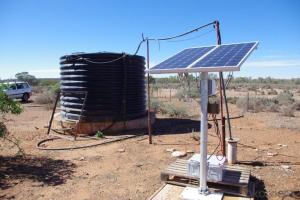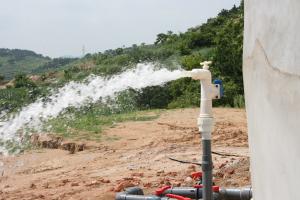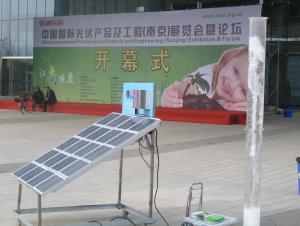Nemo Solar Pump - Solar Water Pumping Systems Solar Energy Water Pump
- Loading Port:
- Shanghai
- Payment Terms:
- TT OR LC
- Min Order Qty:
- 1 set
- Supply Capability:
- 1000 set/month
OKorder Service Pledge
OKorder Financial Service
You Might Also Like
Solar Water Pumping Systems Solar Energy Water Pump
DC solar water pumping system consists of the motor, pump, controller, solar array and some other accessories, such as water level sensor, float switch, etc. Considered that storing water is more efficient than storing electricity, the system is designed to directly drive the pump without battery which can reduce the construction and operating cost and routine maintenance effectively.The PV array consists of multiple solar panels connected in series/parallel, which can supply the whole system as power source by converting the absorbed solar radiation energy to the electrical energy. The pump driven by a brushless DC permanent magnet motor draws water from deep-well or river. The pumped water is then fed into reservoir or water tank, or connected to the irrigation system or fountain system directly.
Advanced Technology
Applications Innovation
The efficiency of DC brushless permanent magnet motor has been increased up to 25% in comparison with traditional asynchronous motor.
Technology Innovation
Stator and rotor are sealed by environment friendly casting resin.Motor insulation resistance can be hold higher than 300MΩfor more than 10 years, which consumedly increased the security and reliability of the submersible motor.
Structure Innovation
Casting resign technology processed stator and rotor as well as the water lubricated bearing make the submersible pump environment friendly.
Feature
High Efficiency & High Reliability
DC Brushless Permanent Magnet Motor
Minimum Maintenance, long Service Life
Environment Friendly Materials, Lubricated Without Oil
Application
Village or Family Water Supply
Animal Drinking Water & Livestock Watering
Garden/Courtyard Irrigation
Swimming Pool
Water Supply for Bivouac or Camping Car
Water Supply for Remote Area
Automatic Control
Operate Automatically, No Need Watching
Maximum Power Point Tracking (MPPT)
Dry-run Protection
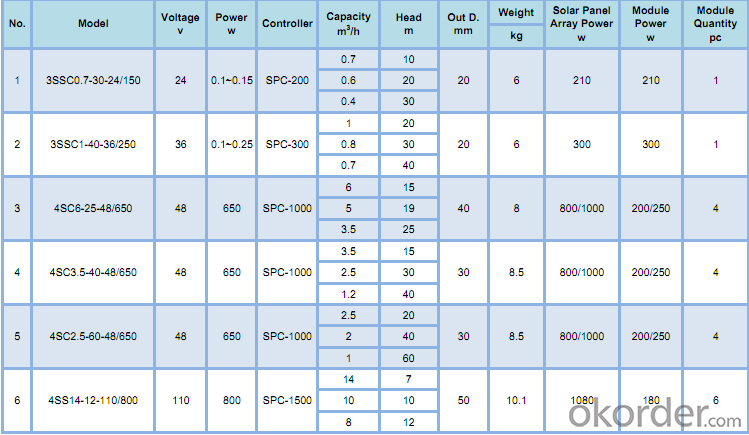
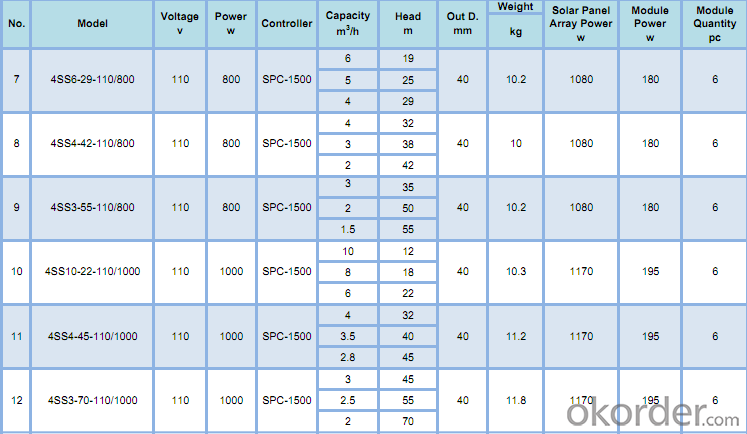
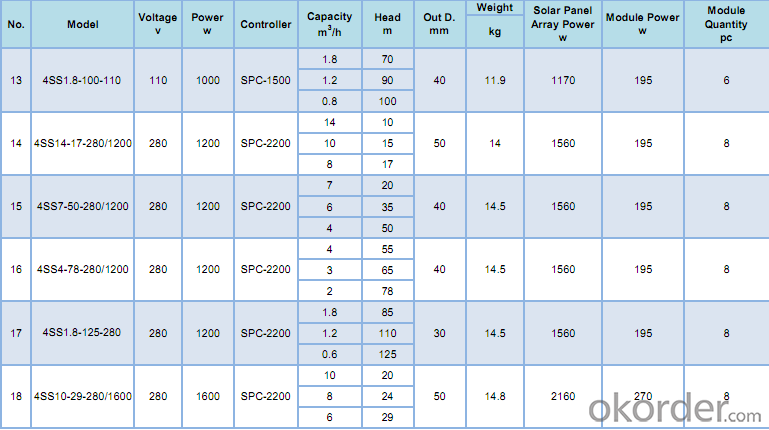


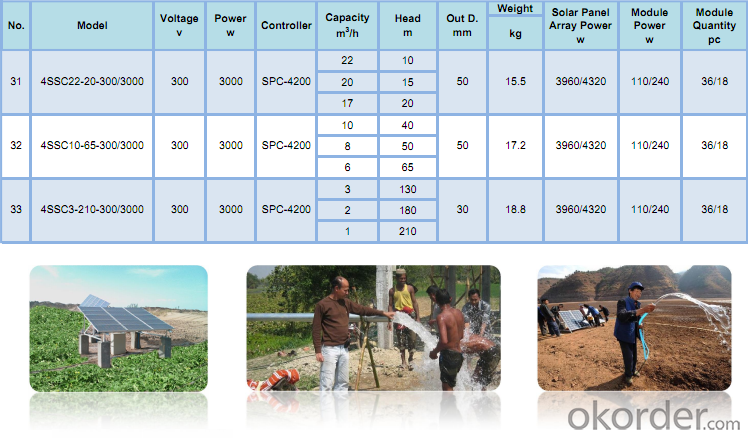
- Q: Can a solar pump be used in areas with high electricity costs?
- Yes, a solar pump can be a cost-effective solution for areas with high electricity costs. Solar pumps are powered by sunlight, eliminating the need for grid electricity. By harnessing renewable energy, they provide a sustainable and affordable alternative, helping reduce dependence on expensive electricity sources. Additionally, solar pumps require minimal maintenance and have a long lifespan, making them a viable option for areas with high electricity costs.
- Q: Are there any limitations to the type of control system that can be used with a solar pump?
- Yes, there are limitations to the type of control system that can be used with a solar pump. One limitation is the availability of sunlight. Solar pumps rely on solar panels to generate electricity, so if there is insufficient sunlight, the pump may not work optimally or at all. Additionally, the size and capacity of the solar panels also impact the pump's performance. Other limitations include the need for proper installation and maintenance, as well as the compatibility of the control system with the specific solar pump model. Overall, while solar pumps offer sustainable and efficient water pumping solutions, their control systems are subject to certain limitations.
- Q: Can a solar pump be used for fire protection or firefighting purposes?
- Yes, a solar pump can be used for fire protection or firefighting purposes. Solar pumps are capable of generating sufficient water pressure to extinguish fires and can be used in remote areas where access to electricity is limited. These pumps use solar energy to power the water pump, eliminating the need for grid electricity or fuel-powered generators. They are environmentally friendly and cost-effective solutions for fire protection in areas where conventional firefighting infrastructure is not available. Additionally, solar pumps can be integrated with water storage systems to ensure a continuous supply of water for firefighting purposes, even during periods of low sunlight or at night.
- Q: What is the average lifespan of a solar pump?
- The average lifespan of a solar pump typically ranges from 15 to 25 years.
- Q: Can solar pumps be used for water supply in schools or orphanages in developing countries?
- Yes, solar pumps can indeed be used for water supply in schools or orphanages in developing countries. Solar pumps are an excellent solution for areas with limited access to electricity or unreliable power supply. They provide a sustainable and cost-effective way to extract and distribute water, ensuring a reliable water source for drinking, sanitation, and other essential needs in schools and orphanages. Additionally, solar pumps require minimal maintenance and have a long lifespan, making them suitable for remote and resource-constrained regions.
- Q: Are there any specific maintenance tasks for the solar panels?
- Yes, there are specific maintenance tasks that need to be performed on solar panels to ensure their optimal performance and longevity. Some of these tasks include regular cleaning of the panels to remove dirt, dust, and debris that may accumulate over time and reduce their efficiency. Cleaning is typically done using water and a soft brush or cloth. Additionally, it is important to inspect the panels for any signs of damage or wear, such as cracks or loose connections, and have them repaired or replaced as needed. Monitoring the system's performance and checking the inverter for any errors or faults is also recommended. Furthermore, trimming any nearby trees or plants that may cast shadows on the panels and regularly checking the mounting structure and fasteners for stability are important maintenance tasks. It is advisable to consult the manufacturer's guidelines or hire a professional for more specific maintenance requirements based on the type of solar panel system installed.
- Q: Can a solar pump be used to pump water from a river or lake?
- Yes, a solar pump can be used to pump water from a river or lake. Solar pumps are designed to utilize solar energy to power the pumping mechanism, allowing for efficient and sustainable water extraction from natural water sources such as rivers and lakes.
- Q: Can a solar pump be used in disaster relief efforts?
- Certainly! A solar pump is capable of being utilized in disaster relief endeavors. When a disaster occurs, access to clean water becomes an essential requirement. Conventional water pumps that rely on electricity or fuel may not be readily accessible or may have limited availability in such circumstances. Conversely, solar pumps are powered by sunlight, rendering them a dependable and sustainable solution for water pumping in areas affected by disasters. Solar pumps are self-sufficient and do not necessitate any external fuel or electricity supply, which is particularly advantageous in disaster situations where power grids may be disrupted or nonexistent. They are simple to install and can be rapidly deployed to provide immediate access to clean water. Furthermore, solar pumps have low maintenance requirements, reducing the necessity for constant monitoring and servicing, which can be challenging in regions affected by disasters. These pumps can be employed to extract water from wells, rivers, or any other water sources, serving as a lifeline for impacted communities. They can be utilized to provide drinking water, irrigate agricultural fields, or support sanitation efforts, thereby addressing multiple needs during disaster relief operations. Additionally, solar pumps are environmentally friendly, emitting no greenhouse gases or pollutants. This aspect of sustainability is critical in disaster scenarios, as it aids in minimizing further harm to the already vulnerable environment and supports long-term recovery efforts. In conclusion, solar pumps offer an effective, dependable, and sustainable solution for water pumping during disaster relief endeavors. Their ability to function independently of electricity grids or fuel supplies makes them an ideal choice for providing immediate access to clean water in disaster-affected areas.
- Q: Are there any safety concerns with installing and operating a solar pump?
- Yes, there are potential safety concerns with installing and operating a solar pump. These concerns primarily revolve around electrical safety, such as the risk of electric shock during installation or maintenance. It is important to follow proper installation procedures, use appropriate safety equipment, and ensure that qualified professionals handle electrical connections. Additionally, there may be safety concerns related to structural stability and maintenance of the pump system. Regular inspections and proper maintenance can help mitigate these risks and ensure safe operation of the solar pump.
- Q: What is the maximum lift height of a solar pump?
- The maximum lift height of a solar pump can vary depending on factors such as the pump's power, design, and water source. However, solar pumps are typically capable of lifting water to heights ranging from 30 to 100 meters (100 to 330 feet).
Send your message to us
Nemo Solar Pump - Solar Water Pumping Systems Solar Energy Water Pump
- Loading Port:
- Shanghai
- Payment Terms:
- TT OR LC
- Min Order Qty:
- 1 set
- Supply Capability:
- 1000 set/month
OKorder Service Pledge
OKorder Financial Service
Similar products
Hot products
Hot Searches
Related keywords
